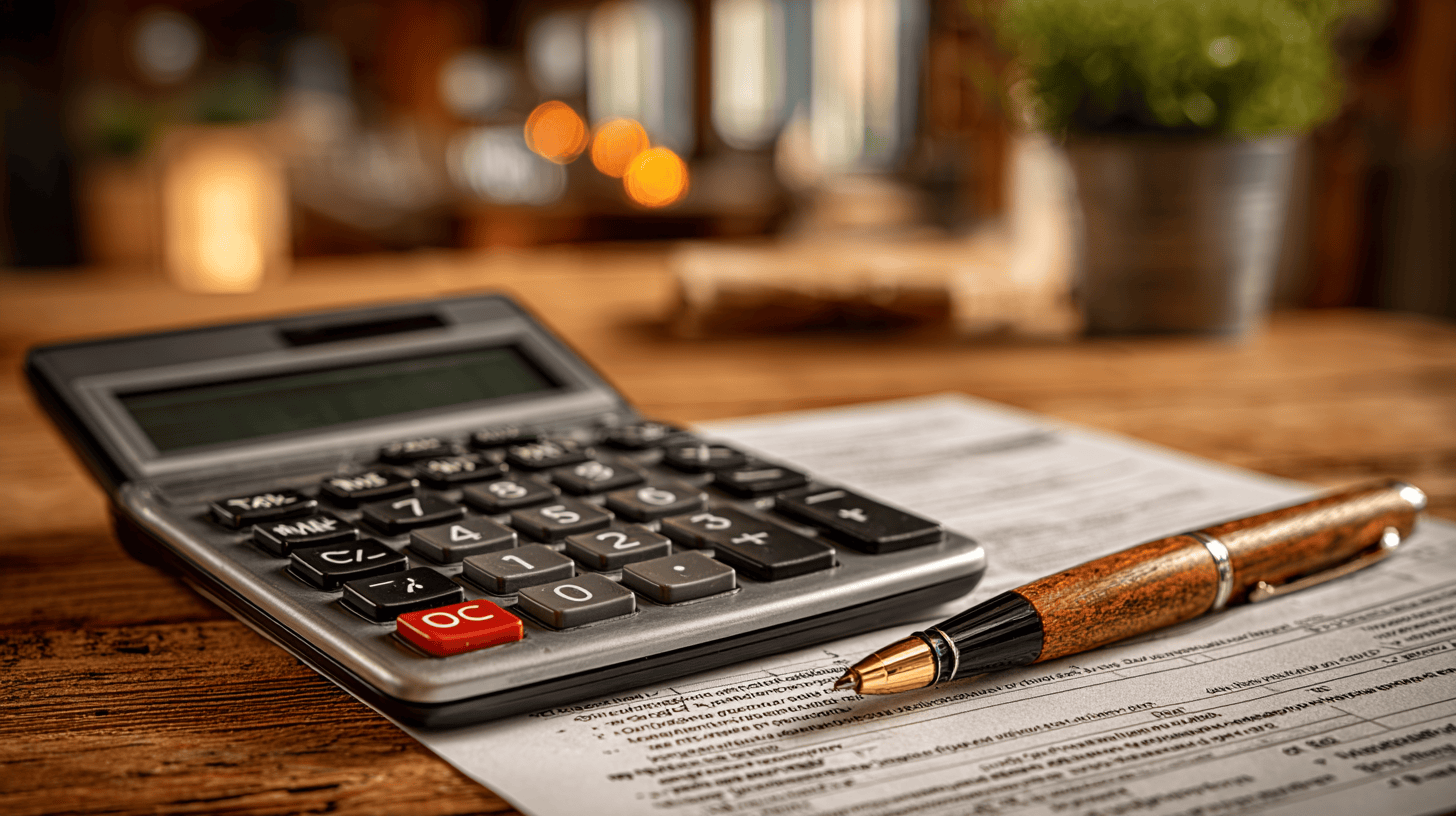Summer wants to be your financial frenemy.
It shows up with promises of “seasonal savings” and “hot deals,” tempting you to spend more to get more. But when you peel back the price tags, you’ll find some expenses that have quietly doubled, products that have shrunk while holding the same sticker shock, and services that now ask for more money in exchange for less.
And yet, some things are actually a steal right now. Travel? Surprisingly sane. Streaming? Still oddly cheap. Even a yoga mat from Walmart might be one of the best purchases you make this summer (if the data holds).
With inflation still lingering, supply chains recalibrating, and tariffs reloading in the background, we’re cutting through the marketing haze to help you spot what’s worth it and what’s smoke and mirrors.
Where Your Money Doesn’t Go as Far Anymore
Some of these options might surprise (or even annoy) you…
1. Coffee
If you feel like your morning cup of coffee is costing more lately, you’re not paranoid. It’s math. The price of roasted coffee rose 9.1% over the past year, and instant coffee jumped 13.5%, according to the U.S. Bureau of Labor Statistics.
And it’s not just grocery store prices. Coffee subscriptions, artisanal blends, and even gas station brews have quietly nudged higher. Specialty coffee shops now routinely charge $7 or more for something that used to be $4.
If you’re still on the fence about whether to buy a grinder and some Costco beans, this might be your summer to commit.
Strategy:
- Skip the overpriced, bagged coffee in boutique stores and opt for whole beans in bulk from warehouse clubs.
- Try regional roasters who haven’t jacked up prices (yet).
- Use credit cards that give extra points on grocery store or dining spend.
- Or go full FIRE and calculate the annualized return of switching to a French press.
Deal Verdict: Coffee sales aren’t sales.
It’s likely the 12 oz bag instead of 16 oz, and you fell for shrinkflation again.
2. SaaS Subscriptions
Most of us have SaaS (Service as a Software) bloat and don’t even know it. The budgeting app you opened twice in March? Still billing you. That PDF tool? $14.99 a month because you forgot to cancel after the 14-day free trial.
According to Invesp, SaaS spending has jumped 27% in the last two years, and many companies are hiking prices while cutting discounts. Usage-based pricing models are also gaining traction, which is another way to charge users more.
Strategy:
- Audit your auto-renewals and downgrade, cancel, or consolidate. Tools like Billshark can negotiate and lower monthly bills on your half (i.e., satellite radio) or cancel unused subscriptions you’ve forgotten about.
- Don’t assume the “annual” rate saves money; run the actual numbers. Sometimes I will sign up for the month-to-month billing even if it costs 17% more than the annual commitment. Why? A month later, I’ll “cancel” my account, and the provider will drop rates by 50% or more to get me to stay.
- Explore open-source or one-time payment tools for common tasks.
- Free trials? Use a burner card and a calendar reminder. Don’t become a recurring revenue victim.
Deal Verdict: Death by $5 cuts.
They sneak up on you, with $5 here and $5 there. Don’t fall for it like me. I did an audit the other month (confident I only had five or six) and found out that I had 13, including a $39-per-month piano app that my daughter had been quietly bilking me for.
3. Fast Food
We’ve all heard (and given) the lectures, but busy people need on-the-go convenience. And not all fast food is completely unhealthy; I like getting grilled chicken sandwiches with salads.
Drive-thru prices are through the roof. A very public takedown on fast food inflation in FinanceBuzz revealed a 60% increase in fast food prices from 2014 to 2024, while the general rate of inflation was just 31%.
McDonald’s, with a 100% price surge, was the biggest offender.
Amid the pandemonium, restaurants began slashing prices on select menu items and meals. In reality, the food hasn’t gotten cheaper; the portions have gotten smaller. It’s shrinkflation with a side of fries.
According to the USDA, the cost of meals away from home rose about 5% over the past year, while consumers have noticed portion sizes getting smaller. Chains like McDonald’s, Burger King, and Wendy’s have reengineered their menus to boost margins without giving customers a heads-up.
Strategy:
- Skip the combo meals and high-sugar drinks. My family has switched to tap water over soda and other beverages when dining out, and it’s dropped our total bill by $10 to $20.
- Look for app-based loyalty rewards and local promos.
- If you dine out frequently, consider meal subscriptions or dining cashback cards.
- Purchase discount gift cards. You can buy gift cards up to 70% off. Use tools like Gift Card Wiki to track how gift card prices are trending and see who has the best deal. I’ve purchased many 30% off Panera gift cards before.
Deal Verdict: The $5 McValue Meal Deal still feeds you, kind of.
Shrinkflation. Ounce per ounce, food isn’t cheaper.
However, this is not a bad thing necessarily for consumer wallets or waistlines. If a customer orders a McValue Meal Deal over a more expensive, more calorie-dense meal, they can still “eat” lunch and tighten their belt.
4. Pet Costs
Most people (I suspect) don’t budget for their dog the same way they do for their human children, but maybe they should. Pet inflation is very real. While prices have dropped slightly in recent months, compared to 2019, pet food is 23.1% more expensive.
Spending on grooming is up, and according to GoodRx, pet med prices climbed 25% in the last five years.
There’s little relief in sight. Demand is steady to growing, vet offices are understaffed nationwide, and pet brands know that you won’t cut corners.
The Great Recession showed that even when consumers curbed their spending on groceries, clothing, and other household expenses, pet spending barely budged. Amid the economic crisis, spending even rose for pet food.
Strategy:
- Online shipments aren’t necessarily the cheapest. Comparison shopping for pet food could save you up to 40%, with Walmart and Sam’s Club consistently having the cheapest prices, according to NBC Money reporting.
- Compare rates of independent vets vs. corporate chains. Even with the Minneapolis-St. Paul area where I live, costs for private-clinic vet services can vary by $100 or more within a 7-mile radius.
- Look into pet insurance before you need it.
Deal Verdict: That flea treatment is an unavoidable wallop.
Frontline is expensive, with prices at an all-time high according to CamelCamelCamel data. But still, a bargain compared to carpet cleaning and vet bills for Lyme Disease, mange, or heartworm.
Don’t miss: Who will care for my pets when I die? The ins & outs of pet trusts
Where Your Dollar Does Go Further (For Now)
You didn’t expect streaming to be on this list, did you?
1. Airfare: Flying High at Surprisingly Grounded Prices
In a summer plot twist, airline prices are actually dropping.
According to a Consumer Price Index report from the Bureau of Labor Statistics (BLS), air fares are falling. And not by just a smidge. Stabilizing fuel costs help, but the airlines overcorrected for post-pandemic travel, and current market headwinds have consumers feeling jittery.
You may still experience price gouging on baggage fees or middle seats that feel like medieval torture, but if you’re flexible on dates and book smart, you’ll likely pay less this summer than you did last year.
Strategy:
- Set Google Flights price alerts and buy when you see dips.
- Fly on Tuesdays or Wednesdays for cheaper fares.
Want to level up? Use cash-back portals, loyalty discounts, and a travel rewards card together for stacked savings.
Deal Verdict: Air travel is cheap for now.
There’s genuine value here. The flight deals are real, but airlines are this close to shifting their pricing if fuel or demand spikes again. It does require some planning to get the best deals, but steal-worthy fares are with us, for now, through the end of August.
Read more: Summer travel is cheap again; here’s how to make the most of these fleeting deals.
2. Streaming Subscriptions
Yes, streaming prices are creeping up. But compared to cable bundles or going to a movie, your Disney+, Netflix, and Max subscriptions are still a pretty compelling bargain.
And most platforms haven’t pushed their ad-supported tiers past $8–$10/month yet. While everyone complains about fragmentation, it’s easy to rotate subscriptions seasonally, where you binge one platform for a month or so, then cancel and switch.
The cost per hour of entertainment is still pennies, and there’s nothing quite so relaxing as a good Netflix binge.
Strategy:
- Cancel the ones you’re not watching and bring them back as needed. Use gift cards and burner credit cards so you don’t wind up with recurring charges for unused services.
- Use JustWatch to track which shows are on which platform so you don’t double-pay.
- Share plans (legally-ish) with trusted family members where allowed.
- Use credit cards with streaming cashback perks.
Deal Verdict: Streaming is still cheaper than cable.
Streaming is still a better deal than cable, if you’re not signed up for seven services at once. Do an audit of which subscriptions you have. (Shamefully, I once kept paying for Peacock months after using it.)
3. Furniture
Even though furniture prices have dipped from pandemic highs, the relief might be short-lived. New tariff hikes, pauses, and general uncertainty are always looming.
Retailers like Wayfair are urging vendors to delay passing on costs while moving “pre-tariff” inventory, but warned that once it’s gone, prices will rise.
Even luxury players are scrambling. Restoration Hardware (RH) has built up $200–300 million in excess inventory to shield against import hikes, yet analysts expect RH will be forced to hike prices after they run through their stockpile.
Strategy:
- Look for floor model markdowns and “summer clearance” blowouts
- Use retailer coupons stacked with cash-back portals
- Focus on modular or flat-pack options that ship cheaper
Deal Verdict: That Ad for a 40% off sectional?
Looks great, because it might cost 20% more by October. Vet the “deal” against tools that track price history, through tools like Honey or Karma.
4. Electronics
Prices on electronics, especially laptops, tablets, headphones, and smart home gear, are in a rare dip. According to recent McKinsey research, retailers are still unloading overstock from late 2024 and early 2025, anticipating tariff hikes later this year that could squeeze margins.
Some big-box stores and e-commerce players are already signaling price adjustments to come once that buffer dries up. If you’ve been waiting to replace a device or grab a back-to-school upgrade, this window might be your best shot before fall price hikes.
Don’t assume that if it’s on sale now, it’s a good buy. Deloitte’s findings are more cautious than McKinsey’s. They recommend proceeding with caution for electronics or other discretionary spending.
Strategy:
- Check deal aggregators like Slickdeals or TechBargains for real-time markdowns.
- Use price tracking extensions like Keepa or Honey to confirm the historical lows.
- Buy from retailers with price match guarantees in case prices dip further.
- Prioritize older-gen models with steep discounts. They’re still plenty powerful; just make sure to buy from a reputable source.
Value Verdict: That $399 laptop?
Grab it now if it meets your specs and you need it within the next year. By the end of the year, that same model may jump $50–$100 if tariffs bite.
5. Used Cars
After years of pandemic-fueled price chaos, the used car market is finally regaining some sanity. According to CarEdge, wholesale prices are stabilizing, with May 2025 showing slight but steady declines.
The Consumer Price Index also showed a 0.5% drop in used car prices month-over-month — nothing dramatic, but the clearest sign in months that the supply-demand imbalance is easing.
While prices are still elevated compared to 2019, the wild markups are softening, especially on sedans and older compact SUVs. If you’ve been holding out, this summer might be the sweet spot before dealers start factoring in potential fall tariffs, interest rate fluctuations, or an uptick in demand from student drivers and commuters.
Strategy:
- Check CarGurus’ Price Trends tool or iSeeCars to spot regional price dips.
- Look for “certified pre-owned.” Some believe the extra price is not worth it, but Consumer Reports found that certified pre-owned (CPO) cars have 14% fewer problems than other used cars.
- Shop private parties or smaller dealers for better deals than national chains.
- Don’t wait for interest rates to drop. Rising rates may offset any price gains.
Value Verdict: That 2018 Corolla with 70k miles?
If it’s clean, priced fair, and has a service record, it could be a decent buy. Inventory is recovering, but prices may firm up again later this year.
Summer Splurges Overview: Buy, Wait, or Skip
Here’s a “Value Scale” you can use:
1 – Strong Value: Reliable price, unlikely to improve soon
2 – Decent Buy: Fair for now, but look for better bundles or timing
3 – Mixed Bag: Looks fine on the surface, but not the best option
4 – Volatile: Prices may rise quickly — proceed with caution
5 – Overpriced: Disguised as a deal, but doesn’t hold up under scrutiny
| Item/Category | Now vs. Pre-pandemic | Current Trend | Value Meter | Buy, Wait, or Skip? |
| Airfare | ↓ Lower than 2022 | Great deals for many locations if you book in advance for summer travel. | 1-2 | Buy (deals likely through Aug) |
| Coffee (grocery) | ↑ Up ~ 9–13% YoY | Increasing; shrinkflation | 4 | Buy small, watch unit pricing |
| Streaming Services | ↑ Up vs. 2019; still cheaper than cable | Ad-tier expansion, churn-friendly | 3 | Skip/rotate strategically |
| Used Cars | ↓ Stabilizing from peak | Flattening, may tick up | 2 | Buy soon if you need one |
| SaaS Subscriptions | ↑ Up 27% over 2 years | Creep up; less promo pricing | 5 | Audit & trim now |
| Furniture | ↓ Below peak, tariff risk | Likely to rise this fall | 4 | Buy before fall price hike |
| Fast Food | ↑ Up 60% since 2014 | Portions shrinking | 4 | Skip combo meals, shop deals |
| Pet Costs | ↑ Food up 23%, meds up 25% | High and steady | 4 | Buy smart, compare vet options |
| Electronics | ↓ Overstocked, prices dropping | Tariff hike risk this fall | 2 | Buy now if upgrading |
Spend With Eyes Wide Open
In a summer filled with conflicting headlines —“inflation cooling,” “tariffs rising,” “consumer confidence rebounding” — it’s tempting to believe things are leveling out. But not everything is as it seems.
Airfare and used cars may finally be trending in your favor. Meanwhile, SaaS subscriptions, household staples, and those sneaky “limited-time” deals are quietly siphoning away dollars while you’re lured in by the illusion of savings.
Beyond spotting overpriced goods, this guide is about recognizing when you’re getting actual value and when you’re paying more for less.
Cut through the noise. Rethink what’s essential. Because even in a calmer market, your money still has work to do.
Image Credits: 穿着拖鞋一路小跑














